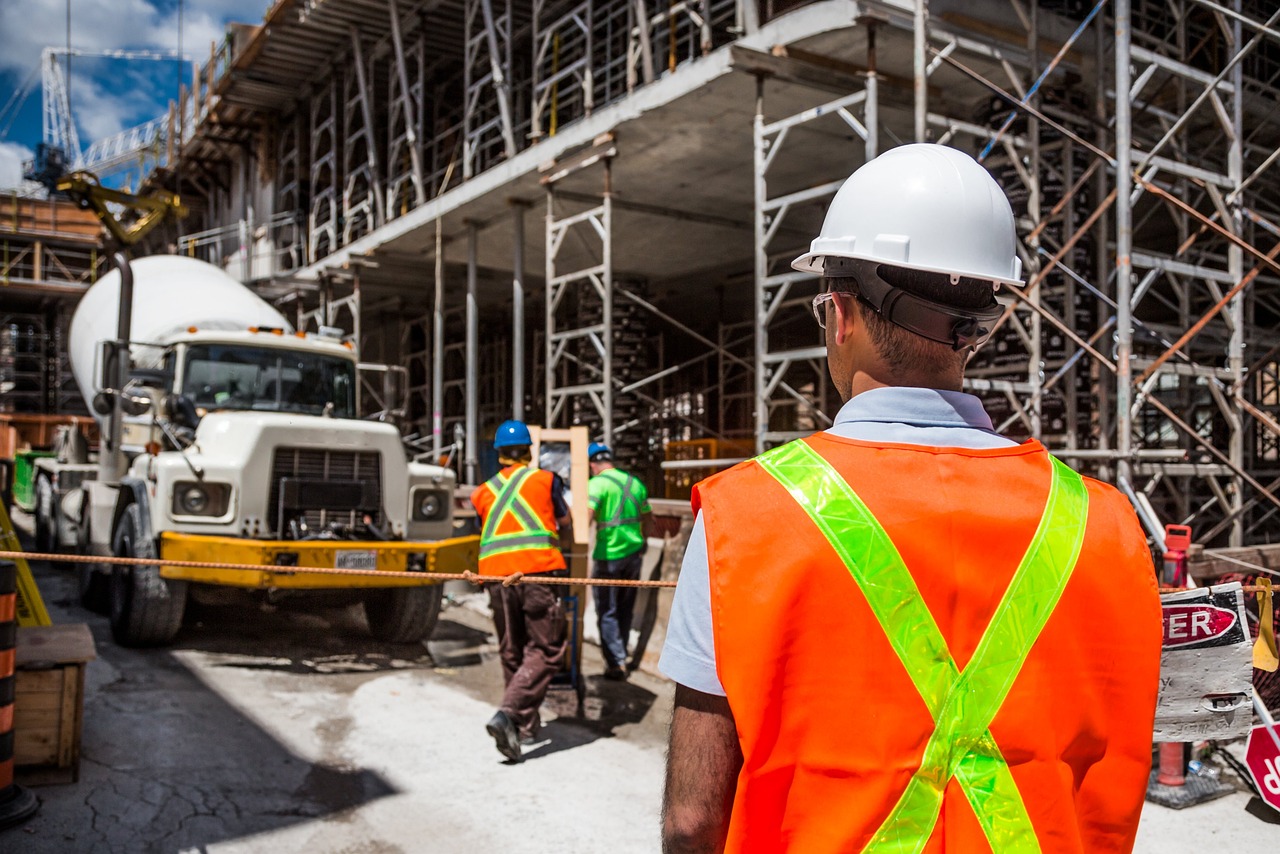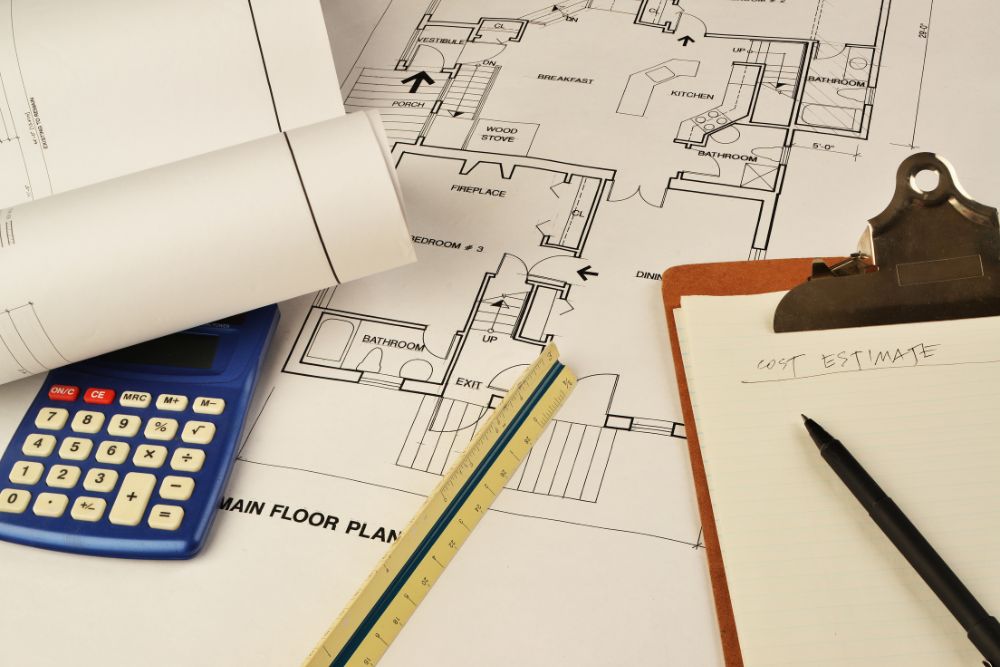Labor productivity is all about how much work a team can get done in a certain amount of time. In construction, it affects your project’s schedule, costs, and quality. If your crew works efficiently, projects finish faster and stay on budget.
If productivity is low, it can cause delays and extra expenses. Tracking productivity isn’t just about counting hours; it’s about measuring how much work is actually completed.
By learning how to calculate labor productivity in construction, you can see how your team is performing and find ways to work smarter, save time, and reduce costs on your construction projects. In this guide, we’ll explain what labor productivity is, what affects it, and simple ways to measure it.
What Is Labor Productivity in Construction?
Labor productivity in construction means how much work a team can complete in a given amount of time. In simple terms, it shows how efficiently your crew is working. For example, if one team installs 500 square feet of flooring in a day and another installs 300 square feet in the same time, the first team has higher productivity.
Measuring this helps contractors understand if they’re using labor and resources effectively. It also helps spot areas where time or effort is being wasted. When you track productivity regularly, you can plan better, control costs, and improve project performance. In short, knowing your labor productivity helps you build smarter, not just faster.
Factors Affecting Labor Productivity
Several factors influence how productive a construction crew can be, and understanding them helps you manage time and costs more effectively.
1. Skill and Experience
A team’s knowledge and hands-on experience directly affect how quickly and accurately they work. Skilled workers complete tasks faster and handle challenges with less supervision, reducing costly errors.
2. Site Conditions
Weather, temperature, lighting, and site layout all impact productivity. Harsh weather or cramped spaces can slow progress and cause frequent breaks or delays.
3. Planning and Management
Poor scheduling or late material deliveries can leave workers waiting instead of working. Proper planning ensures the right people, tools, and materials are available when needed.
4. Communication and Supervision
Clear communication between managers and crews prevents misunderstandings and rework. Good supervision keeps everyone focused on priorities.
5. Safety and Morale
Workers who feel safe, valued, and supported are more motivated. A positive environment reduces stress and improves overall performance.
Methods to Measure Labor Productivity
There’s more than one way to track how efficiently your crew is working. The method you choose depends on your project size, data availability, and what you want to measure. Here are a few of the most common ones:
1. Basic Formula Method
This is the simplest and most widely used method. You divide the total amount of work completed by the total labor hours spent.
Formula: Labor Productivity = Work Completed ÷ Labor Hours.
For example, if a team installs 1,000 square feet of drywall in 50 hours, their productivity is 20 sq. ft. per hour.
2. Cost-Based Method
This method compares actual labor costs with estimated costs. If actual costs are higher, it may indicate lower productivity.
3. Standard Benchmark Method
Every task has an industry benchmark or “standard time.” Comparing your crew’s performance to that standard shows where efficiency can be improved.
4. Observational Method
Sometimes, direct observation works best, tracking how much of the workday is spent on actual productive tasks versus waiting for materials, instructions, or tools.
Step-by-Step Guide to Calculate Labor Productivity
Calculating labor productivity isn’t complicated; it just requires accurate data and a bit of consistency. The goal is to find out how efficiently your team is turning labor hours into real work. Here’s how you can do it step by step:
Step 1: Define the Work Unit
Start by deciding what kind of output you want to measure. This could be square feet of flooring installed, cubic meters of concrete poured, or feet of piping welded. Choosing the right work unit helps you compare results more accurately later.
Step 2: Record Labor Hours
Track the total number of hours worked by everyone involved in completing that task. Be sure to include setup, breaks, and any downtime, since those affect real productivity.
Step 3: Measure Work Completed
Once the task is done, measure how much work was actually completed. For example, if your crew poured 200 cubic meters of concrete over 40 hours, that’s your total output.
Step 4: Apply the Formula
Use the basic equation:
Labor Productivity = Work Completed ÷ Total Labor Hours
In this example, 200 ÷ 40 = 5 cubic meters per hour.
Step 5: Analyze the Results
Compare this number with your past projects or industry benchmarks. If productivity is lower than expected, look into possible causes, like poor weather, lack of materials, or unclear instructions. Small issues often add up to big-time losses.
Step 6: Track Progress Over Time
Keep measuring productivity regularly. Tracking trends helps you spot improvements, adjust schedules, and reward high-performing teams.
Tools and Software to Track Labor Productivity
Manually tracking labor productivity with paper notes or spreadsheets can work for small projects, but it quickly becomes time-consuming as projects grow. That’s where digital tools and construction software make a huge difference.
1. Construction Management Software
Platforms like Procore, Buildertrend, and PlanGrid help contractors record daily logs, assign tasks, and track labor hours in real time. They also generate productivity reports automatically, saving hours of manual calculations.
2. Time Tracking Apps
Apps such as ClockShark and Raken make it easy for workers to clock in and out from their phones. This helps you accurately capture the number of hours each crew member spends on a specific job.
3. Project Scheduling Tools
Software like Microsoft Project or Primavera P6 allows managers to plan workflows, allocate manpower, and identify productivity gaps early on.
4. Spreadsheets and Templates
For smaller teams, Excel or Google Sheets templates still work well. You can log daily progress, calculate productivity rates, and create trend charts to compare results across weeks or projects.
Tips to Improve Labor Productivity on Site
Improving labor productivity isn’t about rushing your workers; it’s about helping them work smarter and stay organized. Here are some easy ways to boost productivity on your construction site:
- Plan Everything Early: Make sure materials, tools, and equipment are ready before work starts. When crews have everything they need, they can stay focused instead of waiting around.
- Train Your Team: Well-trained workers finish tasks faster and make fewer mistakes. Spend time teaching new methods or safety steps; it pays off in the long run.
- Use Technology: Apps and software can track labor hours, tasks, and progress in real time. This helps you spot delays early and make quick fixes.
- Communicate Clearly: Hold short daily meetings to go over plans, updates, and any issues. Clear instructions prevent confusion and rework.
- Keep Workers Motivated: A positive work environment makes a big difference. Appreciate your crew’s effort, offer feedback, and celebrate milestones.
- Focus on Safety: Safe workers are productive workers. When your crew feels protected, they can concentrate better and get more done.
Common Mistakes That Lower Labor Productivity in Construction
Small mistakes on the job site can quickly reduce how much work gets done. The good news is that most of them are easy to fix once you know what to look for. Here are a few common ones:
- Not Tracking Downtime: If you only record active work hours and skip waiting time, your productivity numbers won’t be accurate. Always include downtime in your records.
- Changing Measurement Units: Switching between square feet, meters, or other units makes it hard to compare results. Use the same measurement method on every project.
- Poor Communication: When workers don’t get clear instructions or updates, they waste time fixing mistakes. Short daily meetings can prevent this.
- Lack of Planning: Missing materials or unclear schedules can stop work mid-way. Planning ahead helps the crew stay productive.
- Ignoring Site Conditions: Weather, lighting, or access problems can slow work down. Adjust schedules to match real site conditions.
FAQs
What is an example of productivity in construction?
A simple example is a team laying 1,000 square feet of tiles in 40 hours. It shows how efficiently workers complete tasks; the more output in less time, the higher the productivity.
What is the labor productivity ratio?
It’s the measure of how much work is done compared to the time spent. The formula is work completed ÷ total labor hours, showing how efficiently labor is used on-site.
How to properly estimate a construction job?
Review project plans, list materials, calculate labor hours, add equipment and overhead costs, then include profit. Double-check everything to make sure your estimate covers real project needs and stays accurate.
How to find the labor productivity formula?
The formula is Labor Productivity = Work Done ÷ Labor Hours. It shows how much work your team finishes in a specific amount of time, helping track efficiency and performance.
How to calculate work done in construction?
Measure how much of the planned work is finished, like square feet built or concrete poured. Compare that to the total project scope to calculate the actual work completed.
Conclusion
Understanding how to calculate labor productivity in construction is key to finishing projects on time and staying within budget. It shows how efficiently your team works and helps spot areas where improvements are needed. Tracking productivity regularly makes planning easier, reduces wasted time, and saves money.
At Prime Estimation, we help contractors measure labor productivity accurately and find ways to boost efficiency. With the right tracking and guidance, you can complete projects faster, reduce costs, and get better results overall.
Contact us today to get professional support and take your construction productivity to the next level.












